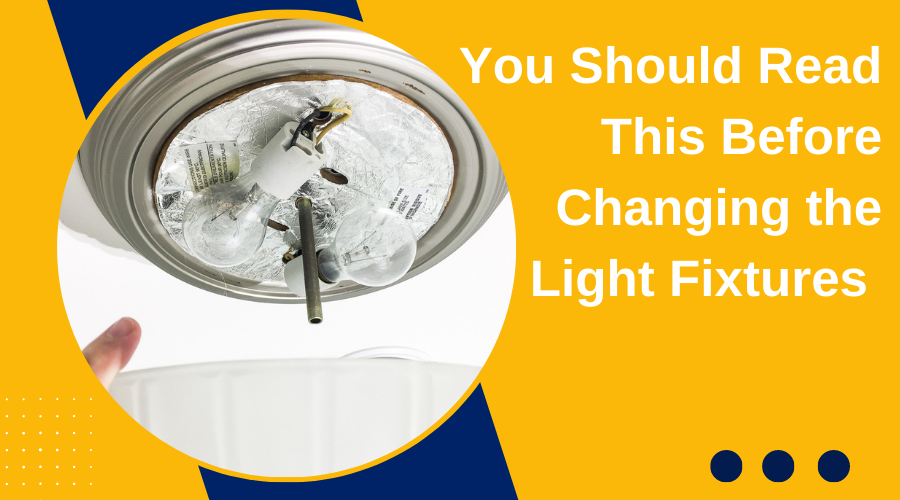Looking to lighten up your room by installing a better light fixture in your living room, study room, or staircase? The available options are many, from a large chandelier to small LED lights at the base of every step. Whether you want to install a new fixture or replace a broken or old light fixture in your home, calling a handyman is an easier option, for both safety and better quality of work offered by a professional.
If you have no experience with electrical work and need help with lighting installation in London or nearby, contact Electric Works London for registered and qualified electrical services seven days a week. However, if you know your way around electrical circuits and equipment, fixing or replacing a light fixture is easier than you think. Lighting fixtures are fitted pretty much the same all over the world, and by watching an online tutorial you can easily learn how to replace a lighting fixture.
Can I change the lighting installation by myself?
If you don’t know what model your light bulb is in, you can take the old one with you to the store to help find a replacement easier. But if you choose to hire an electrician for the replacement, you don’t have to worry about any such details.
· Turn off power
The first rule of safety in electrical work is, never to work on a live appliance or fixture. Locate the corresponding circuit breaker in your breaker box, and switch off power to the circuit containing the damaged light. If the damaged fixture has interfered with electrical current, chances are the breaker has already tripped.
· Remove the canopy
Different models of light fixture covers are fitted differently, and their uncoupling may be a bit difficult at times. Once you have access to the wiring and light socket, check for damage and remove the bulb.
· Unscrew wires
Once the light bulb has been removed, disconnect the three wires connecting the fixture to the main circuit. You should unscrew white, black, and copper wires.
· Remove remains
Uninstall the old fixture by removing the screws or detaching the adhesive, depending on the fixture. Make sure your ladder is secure if you’re replacing ceiling lights. Remove the old fixture and examine if there is any physical damage that has caused the issue. You should try and identify the issue now, before installing a new fixture that could end up with the same fate in no time. Replacing a light fixture without fixing the issue that damaged it only ruins your new light fixture.
If you have trouble identifying the issue replace the fixture, you may need to call an expert electrician the next time it stops working to solve the problem for good. It’s recommended to contact an electrician the first time and save up on an unnecessary replacement, not to mention avoiding electrical accidents.
· Swap the Fixture Plate
The new fixture package doesn’t contain just the light socket, but a dedicated installation plate. Install the new fixture once all issues with the previous fixture have been solved, but remember to cross the wiring through the socket before screwing it in place.
· Connect the Wires
If you have any issues with connecting the wires to the right spot, follow the fixture’s installation manual for more details. It’s recommended to take a picture of the old fixture for reference if you’re replacing it for the first time. Installing the wires incorrectly can damage more sensitive light fixtures.
· Secure light installations
Some hanging light fixtures, including chandeliers and hanging bulbs, are fitted with a chain to support the fixture’s weight. Make sure the chain is properly connected to the ceiling by testing it with a mild pull. Then adjust the length of the chain to match with other fixtures, or if it’s a single chandelier you can adjust it to your comfort.
Hide the remainder of the chain and wiring in the socket or behind the fixture and hide it in the special canopy available in some fixtures. Now you can put the cover back on and screw in the fixture.
· Restore power
Once all that is done, it’s time to test the fixture by turning it on the fixture. If you have made wiring mistakes, the light will not turn on and you have to open the fixture and fix the mistake. If the light is flickering, turn it off and examine the connections. There might be some issues with the wiring, or the fixture itself. Sometimes brand new light fixtures turn out to be defective, so make sure you test the fixture before purchase.
Is changing light fixtures hard to take?
As we discussed, while it doesn’t take a full-fledged electrical engineer to change a light fixture, it’s not as simple as unscrewing a lightbulb. It takes rudimentary knowledge of electrical circuits, some handyman skills to replace the fixture plate and adjust the light.
Can I change light installations without turning off the circuit?
It’s never a good idea to work with live electrical wiring or fixtures. Just because the light switch is off doesn’t mean the fixture is safe to work with, as some switches cut off the null to the circuit instead of the live wire. That means even when the light is off, there is still electricity in the circuit.
DIY or hiring an electrician?
If you’re not a registered electrician yourself, carrying out unlicensed work may interfere with some electrical fire insurance coverage plans. If an accident is caused that can be traced back to your work on the fixture, your claims for reimbursement may be denied by the insurance company.
If you’re in London and wondering if there are affordable electricians near me, contact Electric Works London for all your electrical home repair and maintenance tasks. They offer great services for both small and large scale domestic projects, with a team of Part P certified electricians unparalleled in skill.




















